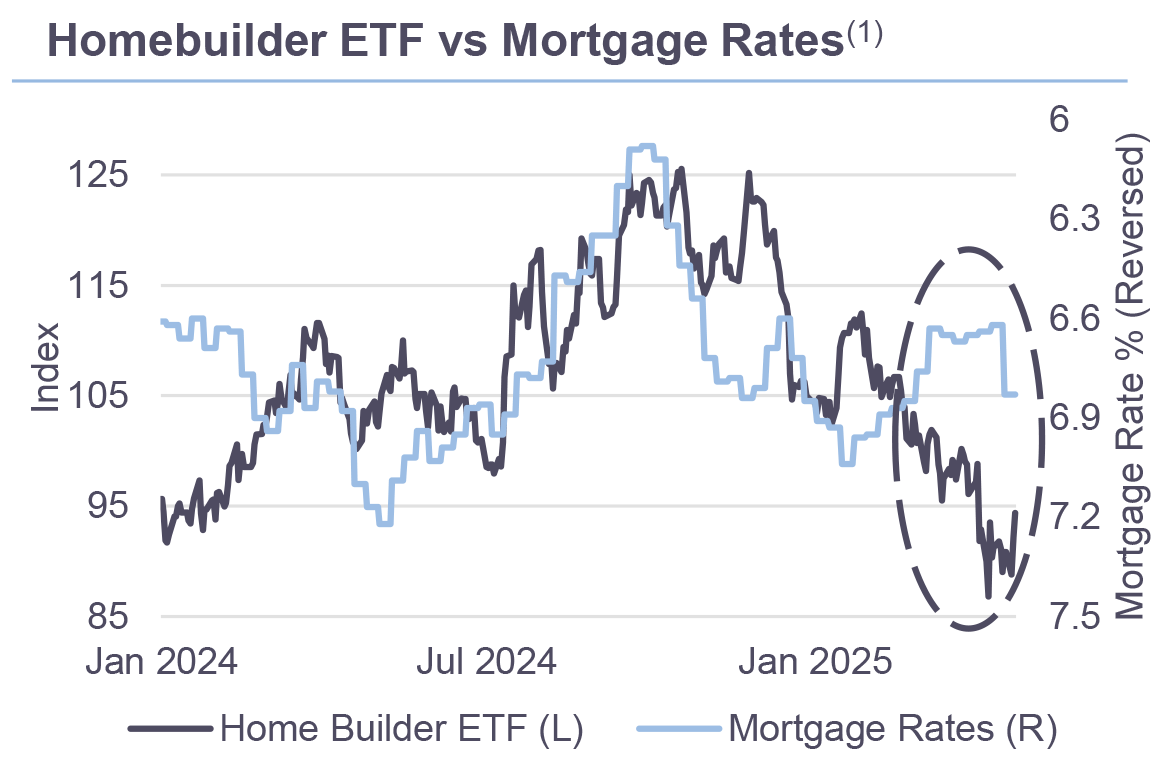The Housing Market Paradox
Housing inventory is rising but still not closing the supply gap. Zillow’s latest report shows 1.15 million active listings nationwide—a 19% increase year-over-year and the most since March 2020. However, this remains about 235,000 (-17%) homes below the 2018–19 pre-pandemic average. Meanwhile, homebuilding activity has slowed sharply. Residential construction is down 15% year-over-year as builders confront elevated costs. Though supply conditions are slowly normalizing, demand remains muted by continued affordability challenges.
The Conversation
A key gauge of housing market conditions is the number of months of supply, measured as the ratio of the current inventory over the pace of homes sold. Using the Zillow inventory and sales data, we estimate the national number of months of supply is at approximately four months. This is below the six months generally assumed as indicating a balanced market. Home listings would need to rise by 600,000 homes, assuming the current pace of sales, to reach the six-month benchmark. We saw home listings rise in two regions recently, Florida and Texas. As a result, we saw months of supply in these two regions rise to the benchmark of six months and thus, home prices softened. We expect a similar result to occur across the US if the nationwide months of supply rises to six months.
Builders, meanwhile, have pulled back sharply on new construction projects. Residential investment is being reigned in across the US, with the total number of homes under construction down about 15% year-over-year in March and nearly 19% below its recent peak in October 2022. Both single-family and multifamily starts have retreated from post-pandemic highs. Developers are contending with elevated material and labor costs, tighter credit, and the challenge of aligning new-home production with subdued buyer demand. This broad slowdown in construction underscores how the sector is pacing deliveries to avoid inventory gluts—even as constrained supply continues to underpin high price levels. The drop in homebuilder valuations, relative to mortgage rates, is indeed reflecting lower unit sales.


The Rithm Take
Housing is caught in a paradox, low supply and low affordability too. There has been dynamic adjustments in activity levels, with pockets of rising inventory pressuring home prices in specific regions. If inventory normalizes further to close the gap on the national supply shortage, home prices are likely to soften as a result. Suppressing supply is the stock of existing homes with borrowers locked into pandemic-era lows in mortgage rates. Until this is unlocked, housing stands to remain a supply driven market.